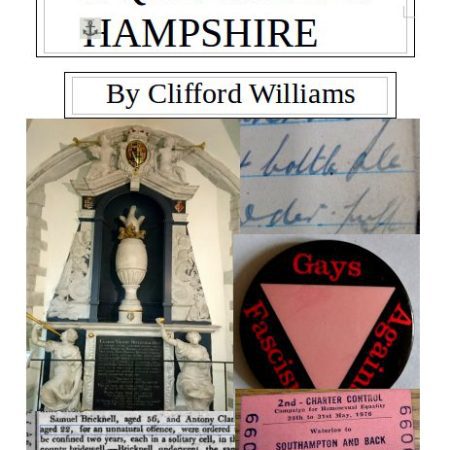Sources, which are the bedrock of history, predominantly consist of documents, though film, sound recordings and increasingly digital files are also important. There are, however, some areas of history which can never be properly explored because there never were any sources, or those that did exist have gone.
The history of the working classes before the nineteenth century, for example, is limited because it relies on second-hand evidence, such as records of the poor law or court proceedings. Also, some sources that might have otherwise been useful have been lost, like the million documents in the City Library, Exeter, destroyed when it suffered a direct hit from the Luftwaffe during WWII!
Equally, there are few records of people whose life involved relationships that were lesbian, gay, or bisexual, or lived a gender at odds with their biological status (transgender). LGBT+ history is sometimes referred to as hidden history. So much of it is unrecorded, or was lost at a time when LGBT+ lifestyles were criminal, and were often regarded as sinful or shameful.
It is only in very recent times, largely since the 1960s, that great efforts have been made to record what was previously missing from many history books and archives. In the 1950s (and even later) gay men burned their diaries and letters in case it incriminated them for what were then criminal offences. Families often destroyed records of gay and lesbian members and suppressed memories.
Not only is the evidence often missing, but where there is any evidence it might be expressed in special language. Such was the disgust felt about gay sex that it was often referred to as an abominable act or an unnatural act. Homosexuals were often called inverts. A whole lexicon of homosexual terminology exists that requires translation.
Also, the meanings of many words have changed. The word ‘queer’ was a very abusive term until recently, but has now been rehabilitated by LGBT+ people in the UK. Hence, LGBT+ history is often problematic and open to speculation. In interpreting evidence, it is necessary to take account of cultures that differed from the complex plural diversities current in the present century.
In 1967 homosexual acts in private were decriminalised, provided both men were at least 21 years of age. In 1995 this age was reduced to 18 and at the start of 2001 the age of consent for homosexual acts was equalised with heterosexual sex acts at 16 years of age. Legislation was also passed in the present century enabling gay and lesbian couples to marry.
Between 2017-201 9 a youth service charity, Y-Services, worked with the Hampshire Record Office to identify LGBT+ items in the archives. Y-Services also interviewed a number of older people identifying as LGB or T. Copies of these interviews are soon to be made available in the Hampshire Record Office.
In 2019 an exhibition of LGBT+ sources was shown in the Hampshire Record office. An accompanying booklet, A Queer A-Z of Hampshire by Clifford Williams gives more detail and is on sale at October Books, 189 Portswood Road, Southampton (Tel: 023 8058 1030), or can be purchased online.

